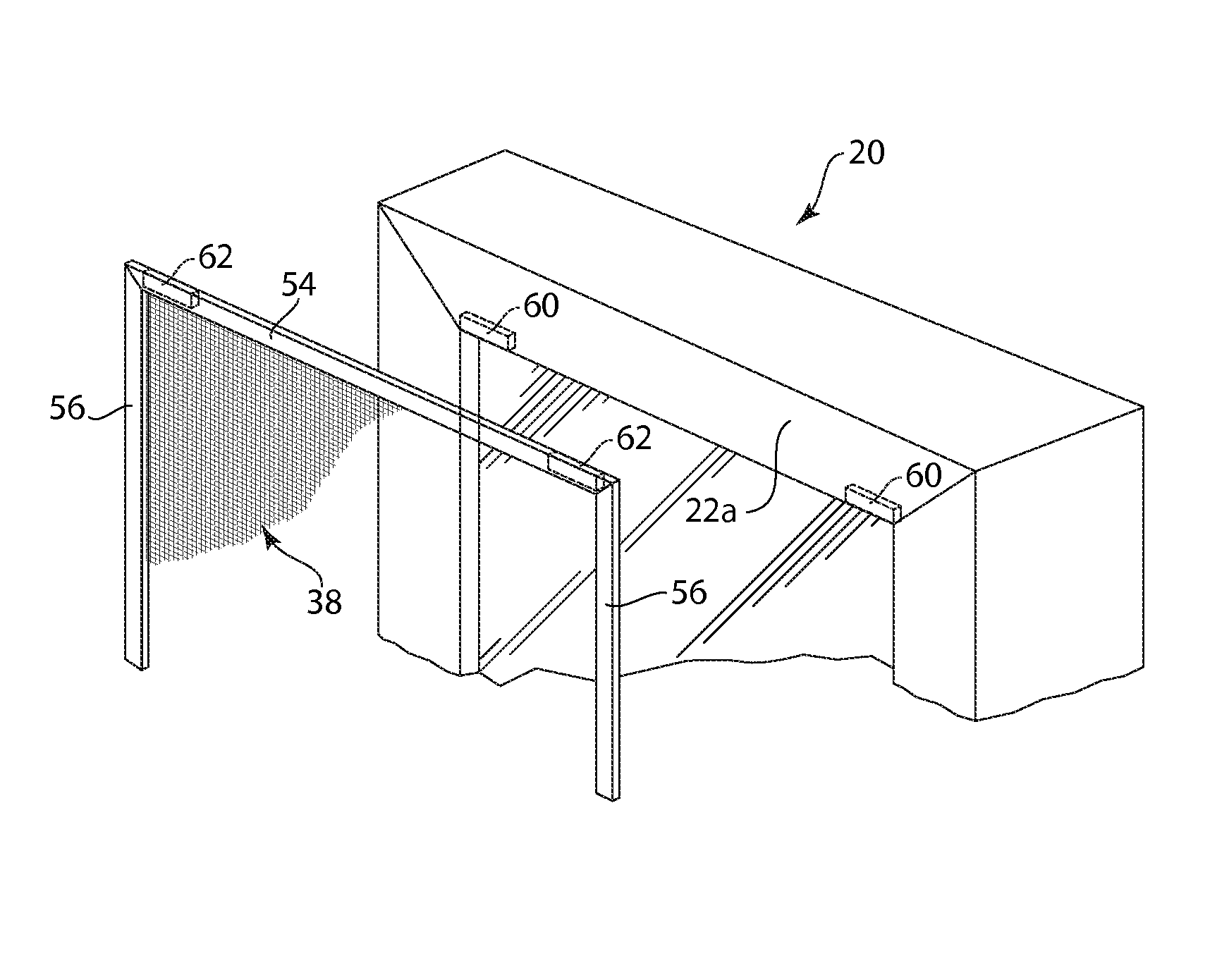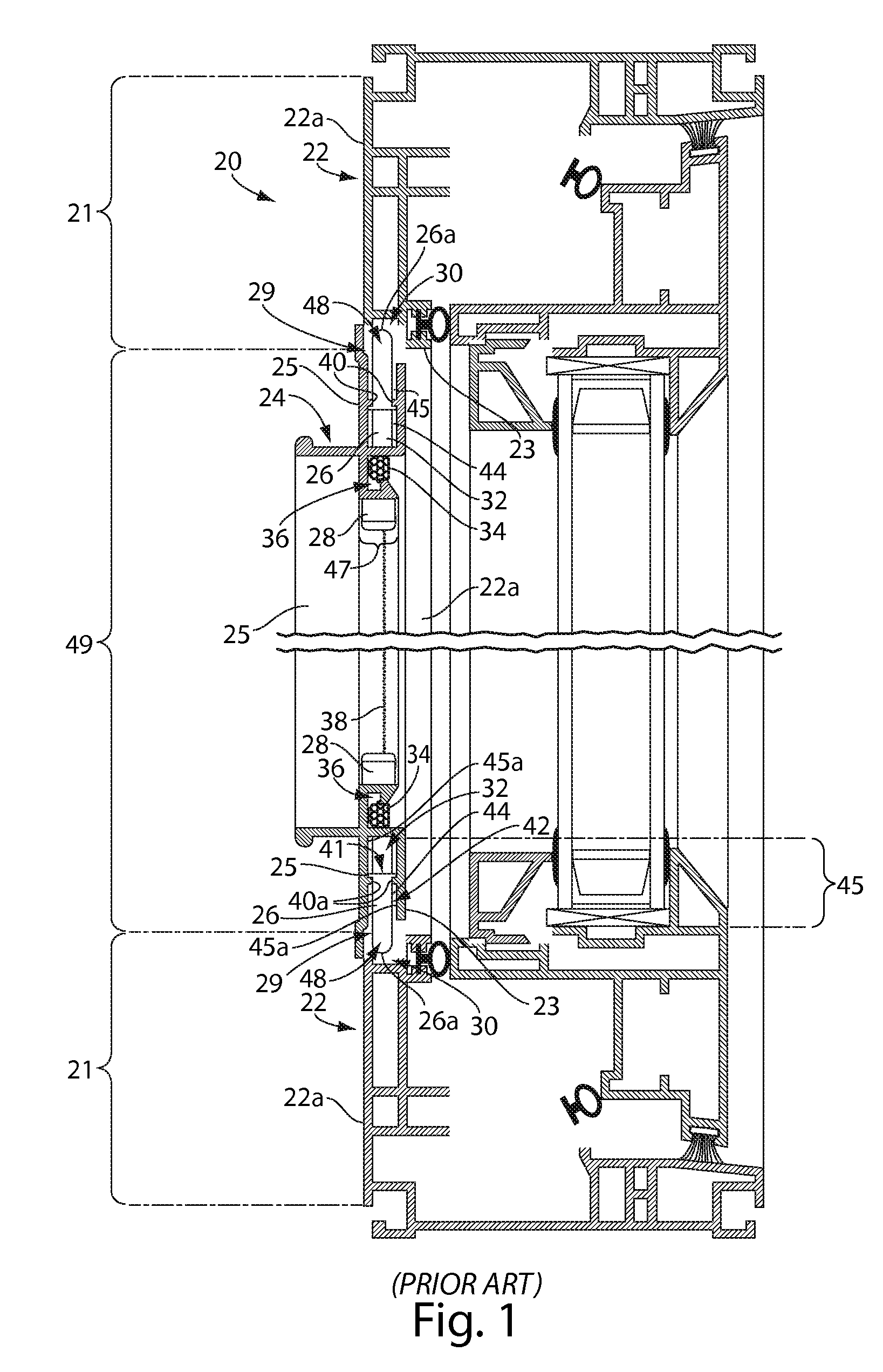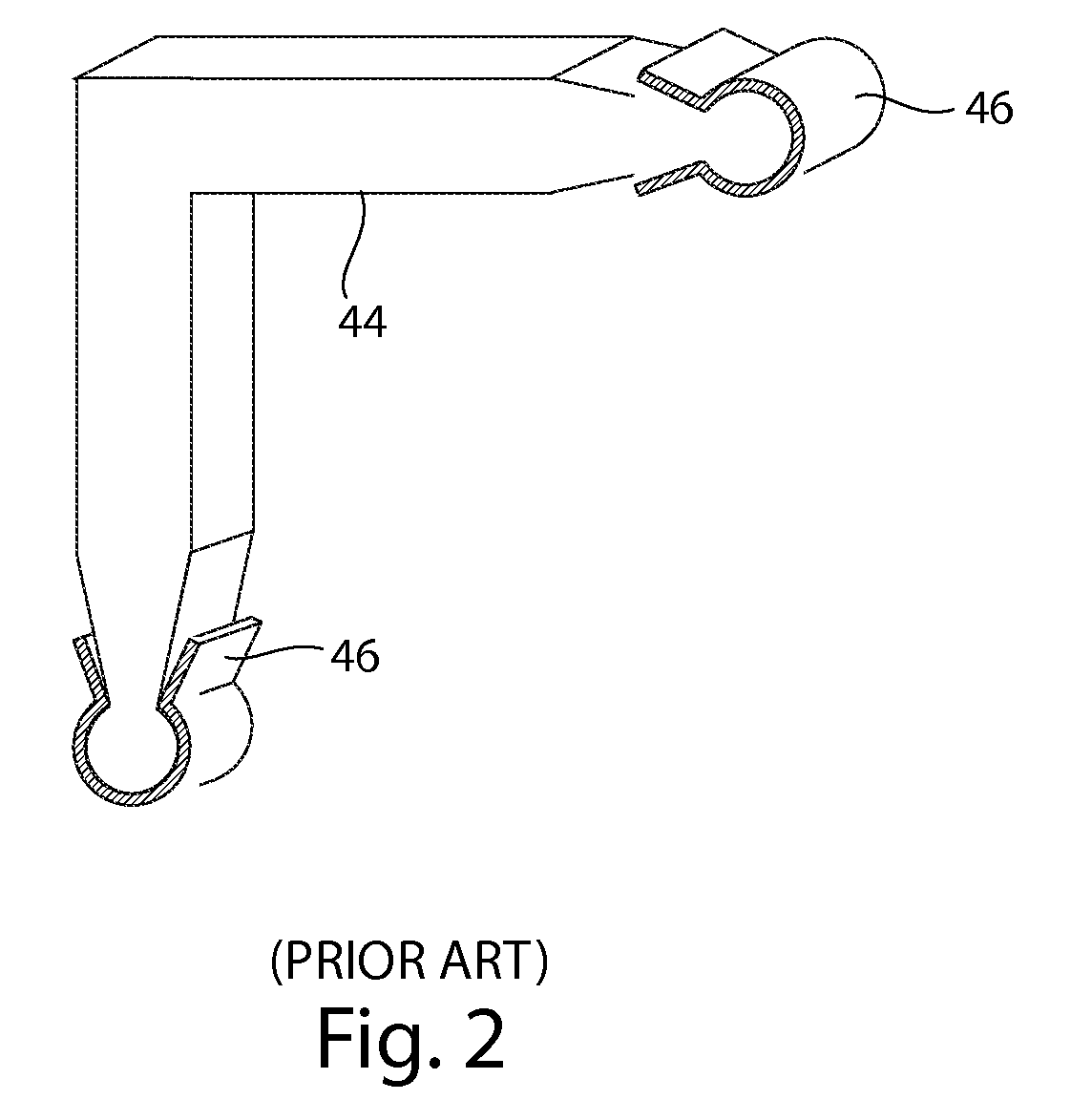Magnetically attachable window screen system
a window screen and magnetic technology, applied in the field of magnetically attachable window screen systems, can solve the problems of difficult to determine precisely where the retaining posts are, the use of retaining posts is an awkward way to install and uninstall window screens, and the post release is often not sufficien
- Summary
- Abstract
- Description
- Claims
- Application Information
AI Technical Summary
Benefits of technology
Problems solved by technology
Method used
Image
Examples
first embodiment
[0029]FIG. 3 is a vertical sectional view of a magnetically attachable window screen system. Magnetic window screen (with post cavity foot) 50 is for use with prior art window frame 22 which comprises slotted post cavity 30 and post cavity slot 48. Lower horizontal screen bar 52 has a post cavity foot 66 for insertion into slotted post cavity 30 through post cavity slot 48 for supporting the weight of magnetic window screen 50 and thus preventing window screen insert 47 from slipping out of window screen opening 49. Those skilled in the art will recognize that window screen insert 47 need not be between side perimeter walls 23 in this and similar embodiments unless the window screen insert 47 is used to support the window screen. As the side profile of lower horizontal screen bar 52 post cavity foot 66 would typically constitute one long foot running almost the entire length of lower horizontal screen bar 52 as shown in FIG. 4. FIG. 4 shows the ends of post cavity foot 66 which may ...
second embodiment
[0040]FIG. 7 is a horizontal sectional top view of the magnetically attachable window screen system showing lip foot 84 overhanging and engaging support lip 82.
[0041]Magnetic window screen 71 also contain corner key cavities 58 for receiving corner keys 44 at the ends of screen bars 54, 56, 88. FIG. 7 also shows a typical gasket cavity 36 for receiving screen gasket 34 for holding screen mesh 38 in place. The sides of screen magnet cavity 64 again act as spacers 68 and may perform this function whether or not screen magnets 62 are inserted in screen magnet cavities 64.
[0042]FIG. 8 is a vertical sectional view of a third embodiment of the magnetically attachable window screen system, showing the window frame 72 of FIGS. 6 and 7, however, lips 82, 86 are not required in this embodiment and treated as decorative only in this third embodiment. Side perimeter wall 23 of lower horizontal side 76 of window frame 72 acts as a ledge for receiving screen frame support surface 94 for supportin...
third embodiment
[0044]FIG. 9 is a horizontal sectional top view of the magnetically attachable window screen system showing vertical screen bars 90 with screen magnet cavities 64 without magnets 62 therein and vertical frame magnet cavities 80 without magnets 60 therein. As previously recited magnets 62, 60 may be used within vertical cavities 64, 80 respectively if extra strength is required or to prevent bowing of screen bars 90. The height and width of window screen insert 47 of window screen 89 are slightly smaller than the height and width of window screen opening 49 of window frame 72 to prevent binding in the event of minor expansion of window parts.
[0045]In embodiments one to three aforementioned screen magnets 62 in screen magnet cavities 64 mounted against front perimeter walls 21 co-operate with corresponding frame magnets in a substantially horizontal manner. In the fourth, fifth and sixth embodiments described for below the magnets within the screen bars and magnets within the window f...
PUM
 Login to View More
Login to View More Abstract
Description
Claims
Application Information
 Login to View More
Login to View More - R&D
- Intellectual Property
- Life Sciences
- Materials
- Tech Scout
- Unparalleled Data Quality
- Higher Quality Content
- 60% Fewer Hallucinations
Browse by: Latest US Patents, China's latest patents, Technical Efficacy Thesaurus, Application Domain, Technology Topic, Popular Technical Reports.
© 2025 PatSnap. All rights reserved.Legal|Privacy policy|Modern Slavery Act Transparency Statement|Sitemap|About US| Contact US: help@patsnap.com



